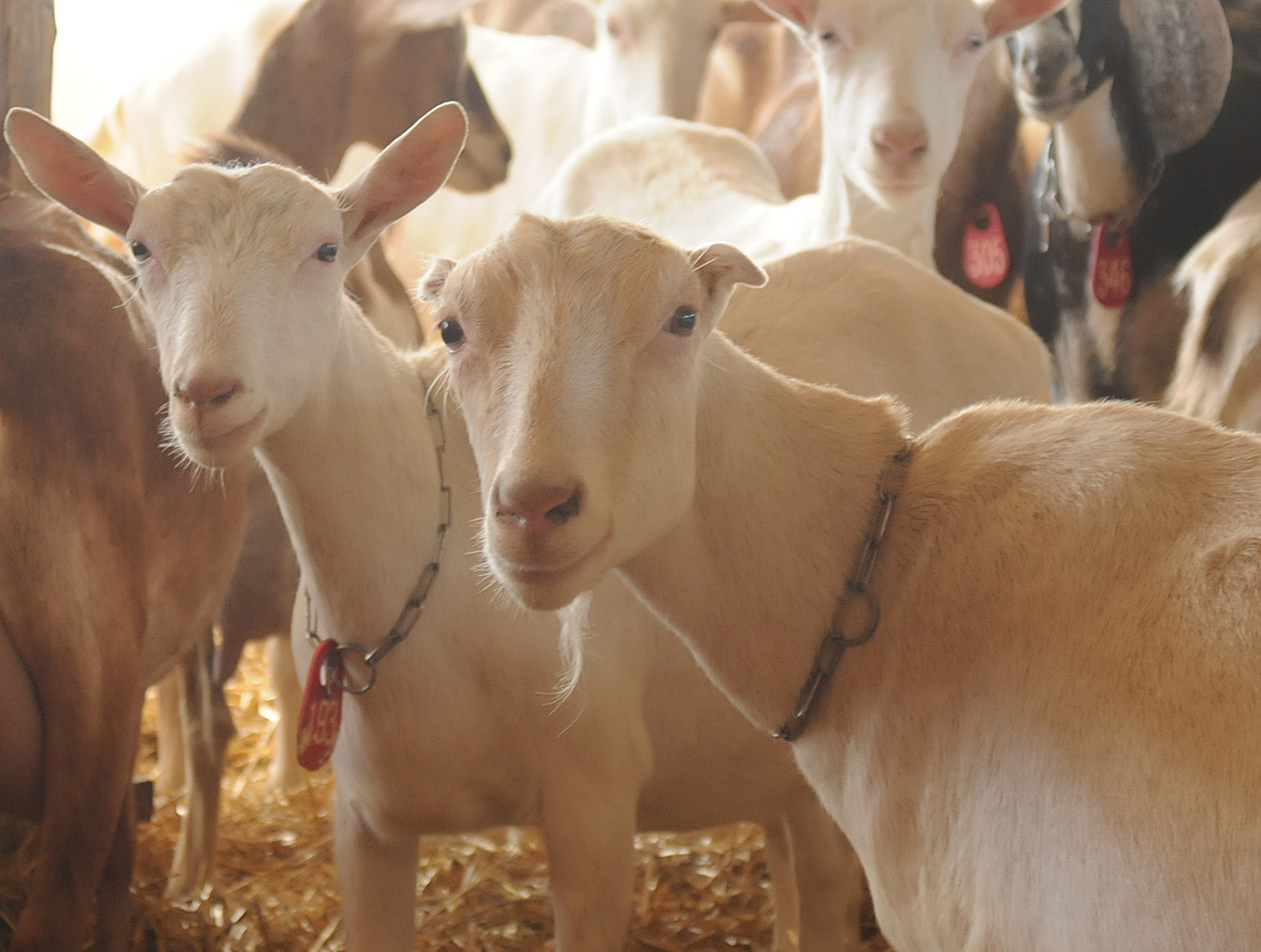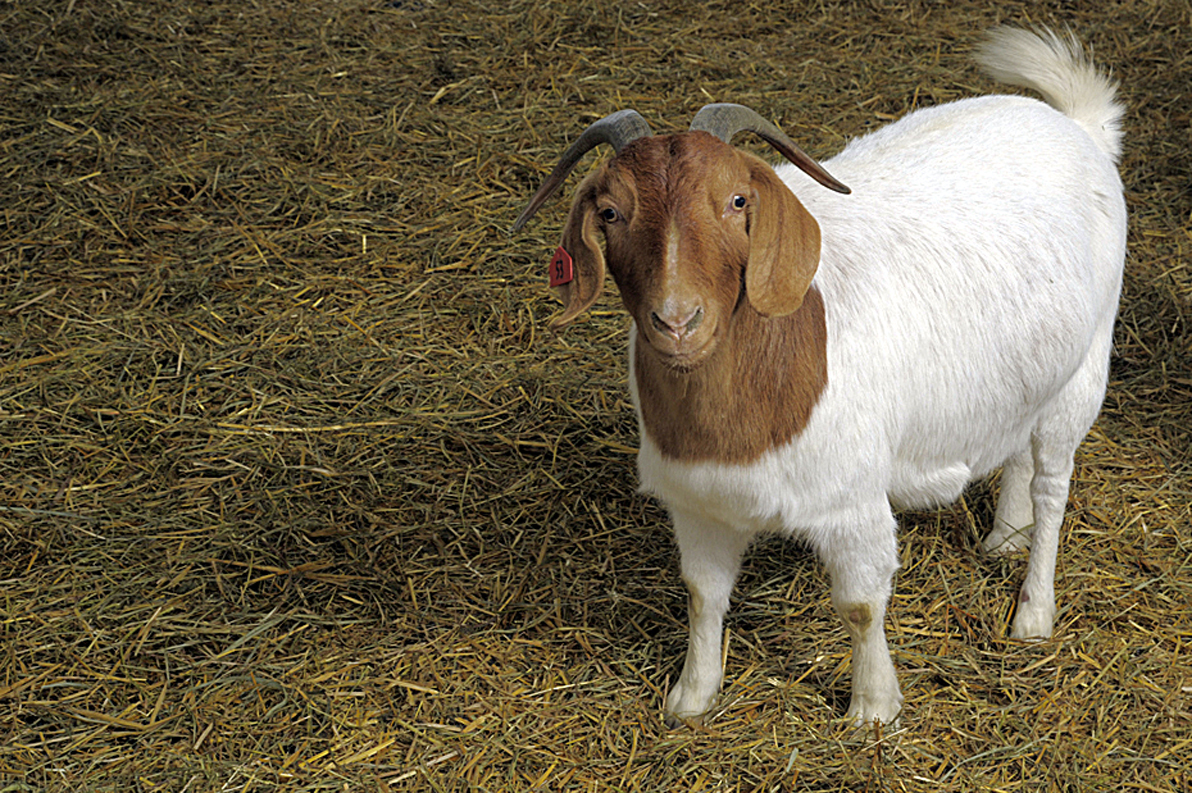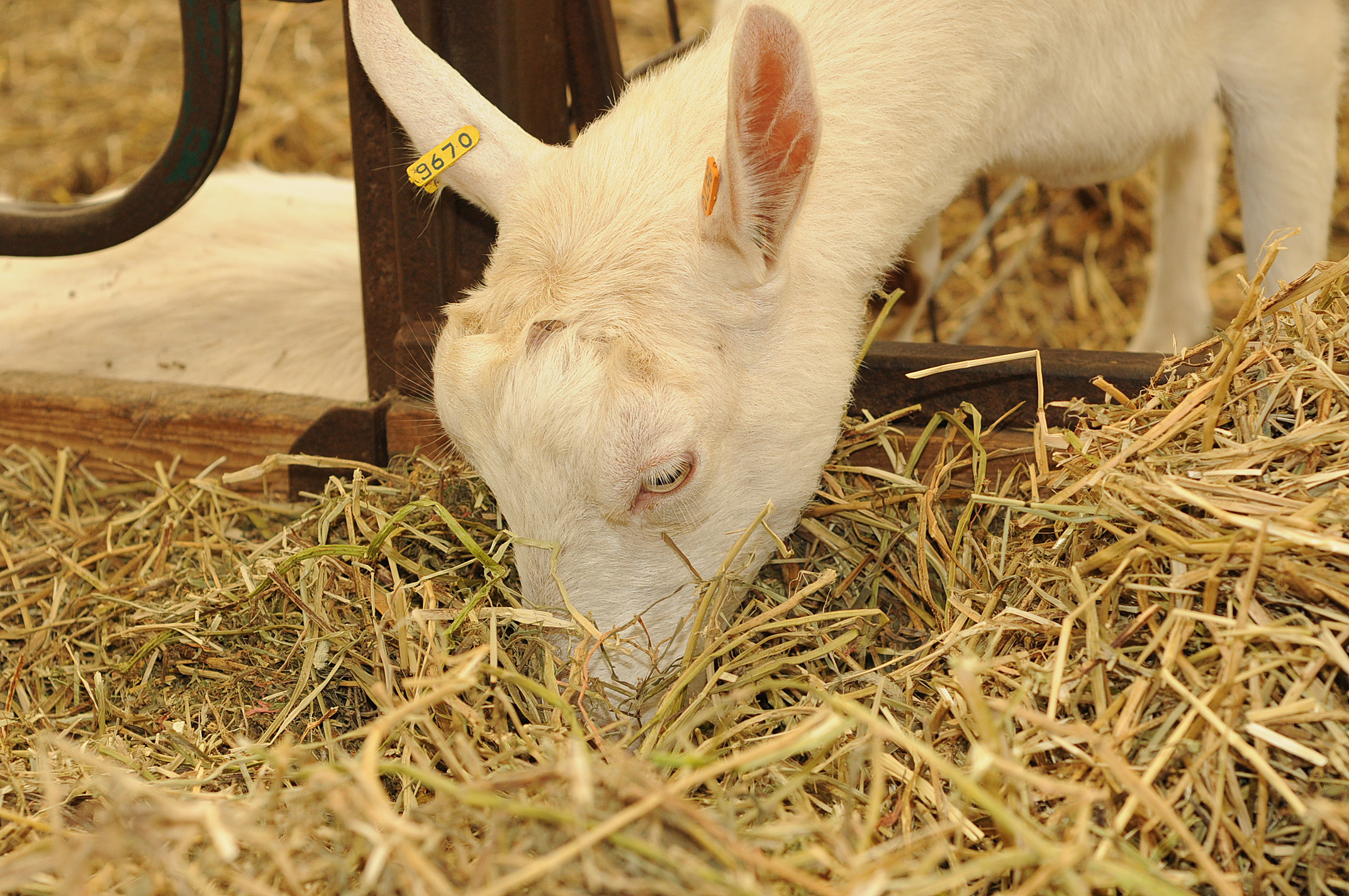Megan Kitts – Research Assistant, OMAFRA
Anita Heeg – Feed Ingredients and By-Products Specialist, OMAFRA

Depending on the year and location, Ontario can be quite cold with variable precipitation across the province. Feeding out forages in the winter months certainly comes with some challenges. One challenge is the potential to feed snow and ice along with the forages that are being prepared for feeding.
In recent winters, the question ‘does frozen feed affect ruminants?’ has come up in discussion. If so, what does it affect? Looking at research that has been done with regards to feeding frozen feed, or allowing animals to obtain their water intake from snow or ice, we noticed a lack of data on this topic, especially for goats but also for other ruminants such as sheep and cattle. The following paragraphs are a summary of the research on this topic.
For a rumen to function properly, it is important that the temperature remains consistent, as rumen microbes are more efficient in a consistent environment. Studies show that ingestion of frozen feed and water can cause the rumen temperature to drop rapidly but not return to a normal temperature for several hours. The ingestion of frozen feed not only affects the ruminal temperature, but the overall body temperature of the animal itself, as demonstrated by a decreased rectal temperature. These same studies show that even if the ruminant is kept in a warm barn but only given access to frozen water sources, they can be observed shivering and bellowing to express discomfort. This indicates that ingestion of frozen water or feed can cause a “cold shock”, a rapid decrease in internal temperature and induction of shivering, regardless of other factors. The long term effects on the health and production of the animals experiencing such cold shock has not been evaluated. Suggested methods to reduce this cold shock include; providing dry roughage along with frozen feed to buffer the rumen, or providing warm water to counteract the effects of the frozen feed.

Another concern associated with feeding frozen feed to ruminants is that studies show it decreases their dry matter intake (DMI). The exact reason why DMI drops with frozen feed is unknown, although there are a few theories. One researcher concluded that DMI decreases due to the increased effort needed to break off and chew frozen feed compared to thawed feed. Simply chopping the feed into more manageable pieces could be a solution to this problem. Another researcher came up with a more complex theory. If feed is poorly digestible, the animal will spend more energy warming up and digesting it then they would extract from it. For this reason the ruminants decrease their feed intake to conserve their energy. This theory highlights the importance of providing ruminants with high quality feed, especially in the winter months when the feed can be expected to be cold or frozen. Regardless of the exact reason why, DMI decreases when ruminants are offered frozen feed. It has been demonstrated that supplementing frozen feed with roughage can increase the DMI back to a normal level. Therefore, studies suggest there are several ways to increase DMI when feeding frozen feed; chopping the feed into manageable chunks, providing highly digestible feed, and supplementing frozen feed with roughage are a few tested methods.
The upkeep of the body temperature, regardless of external influences, is called thermoregulation. Once the body temperature falls below the lower critical temperature, the animal must increase its metabolic heat production to sustain itself. When ingested feed or water is frozen, the ruminant must first warm the feed to the ruminal temperature before it can begin to digest. This warming of feed increases the ruminant’s metabolic heat production. The feed begins to be warmed by the mouth and esophagus when it is being chewed and then swallowed. Once it has reached the rumen, blood flow to the rumen is increased and energy is diverted towards the rumen. Energy that was once stored as fat or used for other processes such as lactation is now diverted to the rumen. It is unknown exactly how much energy is needed to heat frozen feed as it varies by rate of feed intake and quality of diet, but it is known that this extra energy requirement increases the maintenance energy demands of the animal. For this reason it is important to ensure that all animals are in good body condition and have access to energy dense feed when feeding frozen feed or water.
Another question that arises when feeding frozen feed is; is the quality of the feed being affected? Are the ruminants capable of extracting the same amount of nutrition from frozen feed as they do thawed feed? Unfortunately, there is not a lot of research in this area. Although the research that we do have suggests that frozen feed has lower crude protein content than thawed feed. The study noted that frozen feed also appears to have increased lignin, the indigestible portion of plants, therefore suggesting a decrease in the digestibility of the frozen feed. However, this is only one study and more research is needed to conclude exactly how feed quality is affected by freezing.
 Feeding frozen feed to ruminants can be a challenge in the Ontario winters. Research has been conducted to illustrate the short term effects the ingestion of frozen feed has on ruminants. Although, some studies have concluded that there are negative effects of feeding frozen feed to ruminants, these negative effects can be easily overcome. By simply providing ruminants with roughage and high quality feed we can counteract the drop in both body temperature and DMI. Additionally, offering goats clean, warm water (15°C or 60 °F) is ideal to encourage consumption of water and improve DMI. Ontario Goat does not recommend feeding goats ice or snow as a sole source of water. Ensuring all animals are in good body condition prior to the winter months also aids in counteracting these negative effects. The long term effects on the health and production of feeding ruminants frozen feed have not yet been evaluated. More research is needed to investigate these long term effects and their possible mitigation.
Feeding frozen feed to ruminants can be a challenge in the Ontario winters. Research has been conducted to illustrate the short term effects the ingestion of frozen feed has on ruminants. Although, some studies have concluded that there are negative effects of feeding frozen feed to ruminants, these negative effects can be easily overcome. By simply providing ruminants with roughage and high quality feed we can counteract the drop in both body temperature and DMI. Additionally, offering goats clean, warm water (15°C or 60 °F) is ideal to encourage consumption of water and improve DMI. Ontario Goat does not recommend feeding goats ice or snow as a sole source of water. Ensuring all animals are in good body condition prior to the winter months also aids in counteracting these negative effects. The long term effects on the health and production of feeding ruminants frozen feed have not yet been evaluated. More research is needed to investigate these long term effects and their possible mitigation.
